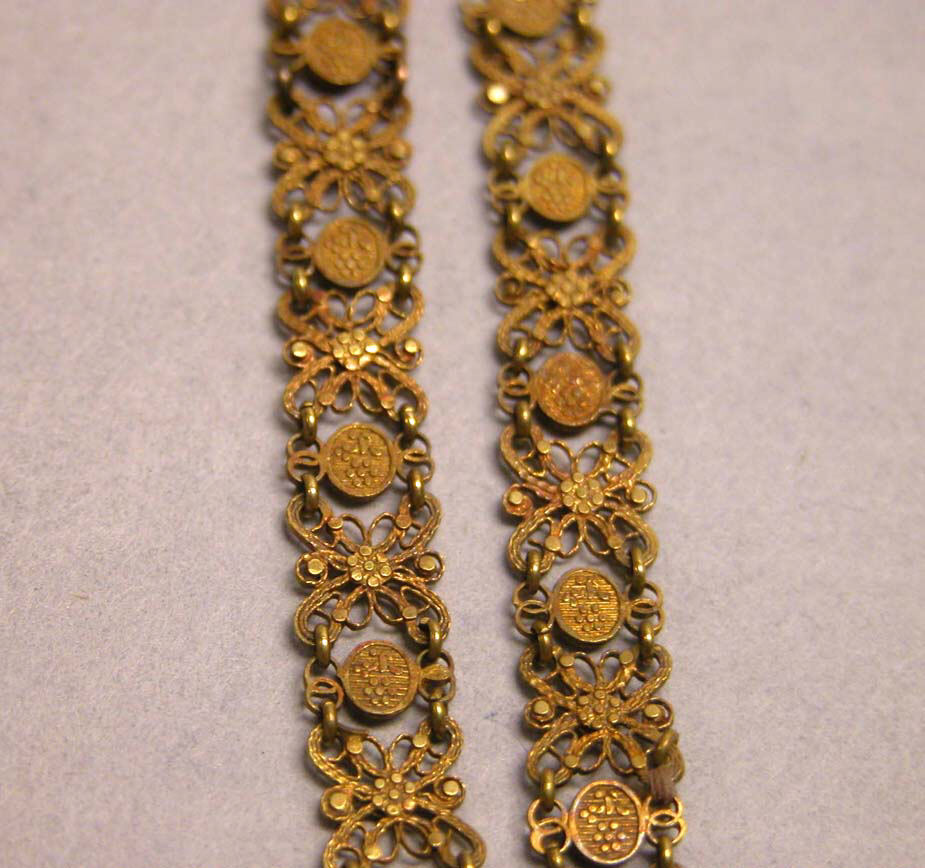Necklace with pendant
Not on view
Goldwork has a long pre-Hispanic history in the Philippines, where the practice of wearing an abundance of gold ornaments greatly impressed the first Europeans who arrived on the islands. During the colonial period in Manila, immigrant craftsmen from southern China made most gold jewelry. This type of necklace, called a tamborin, is a traditional form of secular adornment that evolved from rosaries and reliquary pendants introduced by missionaries. Flat cookie-shaped beads, known as alfajores, alternate with lobed filigree beads to form the chain, which terminates in a rosette-encircled pendant, or relicario, with glass-encased gold flowers.
This image cannot be enlarged, viewed at full screen, or downloaded.
This artwork is meant to be viewed from right to left. Scroll left to view more.




